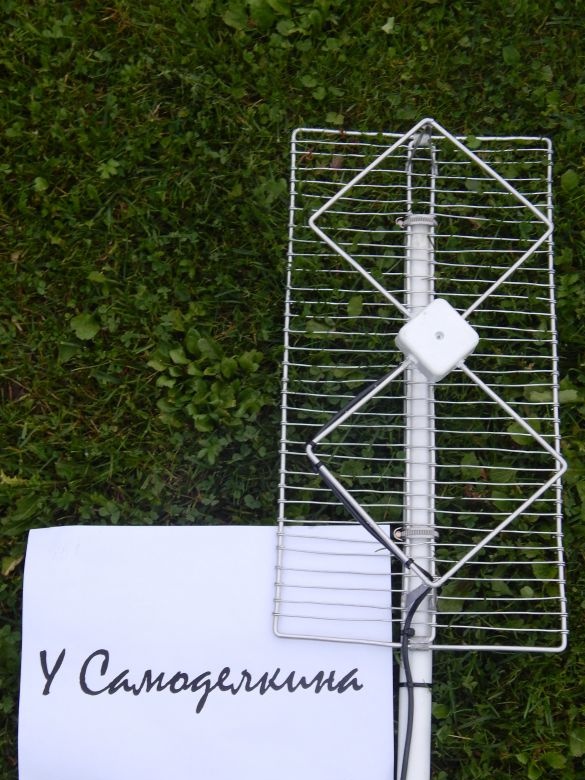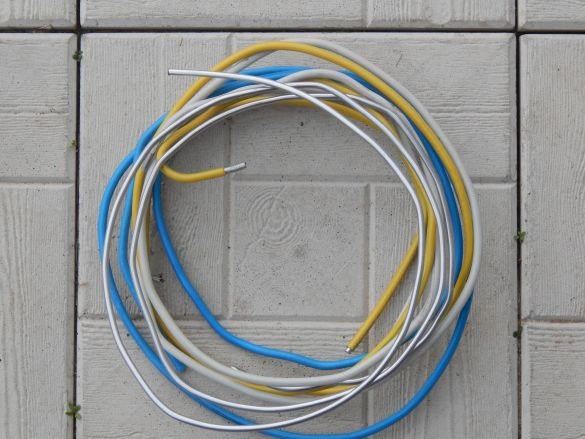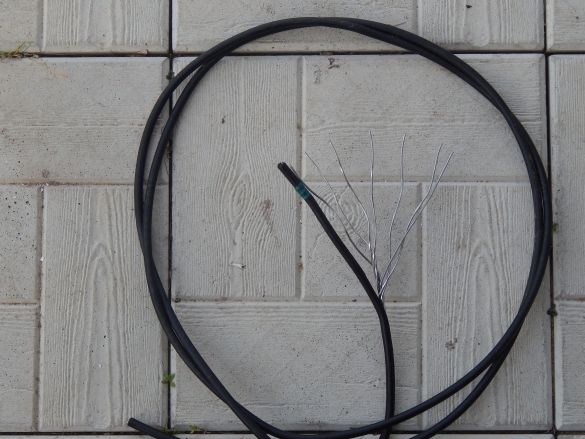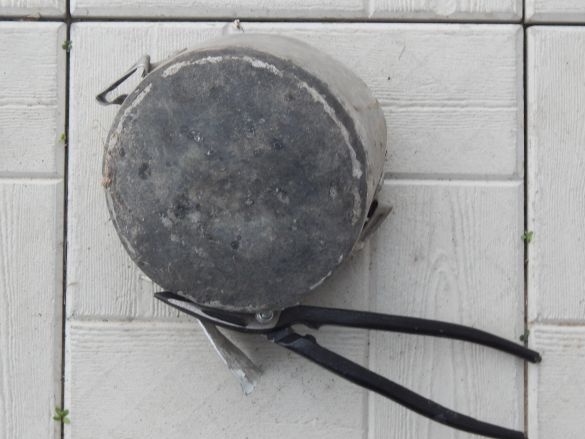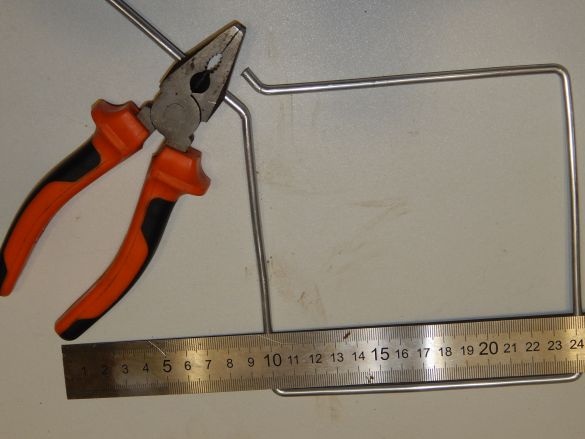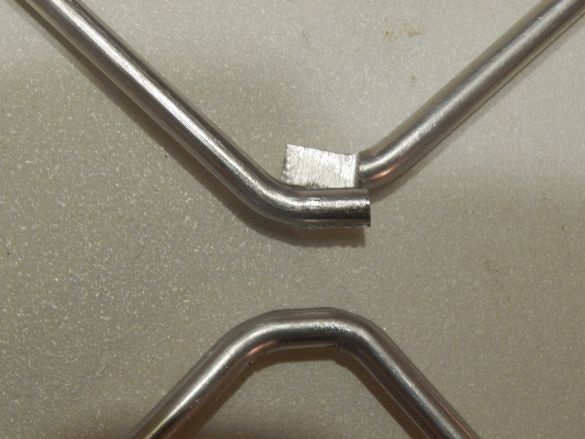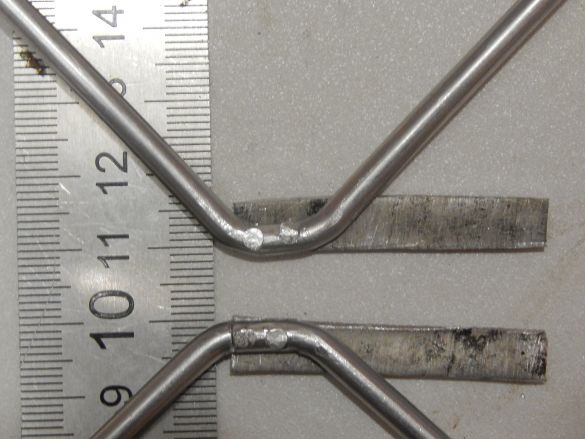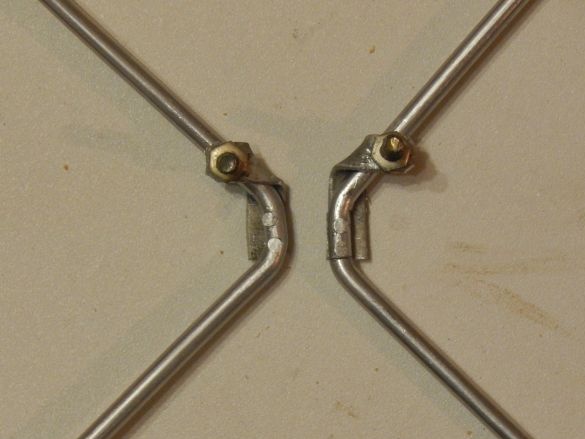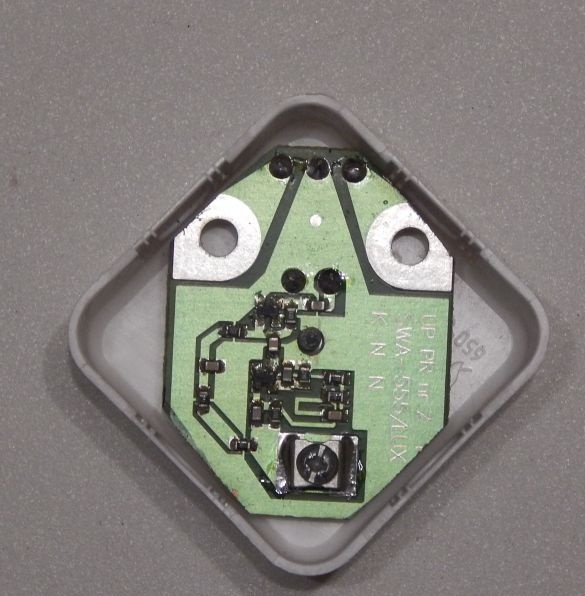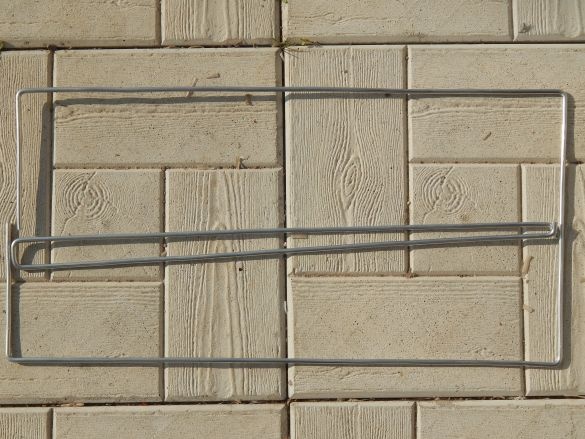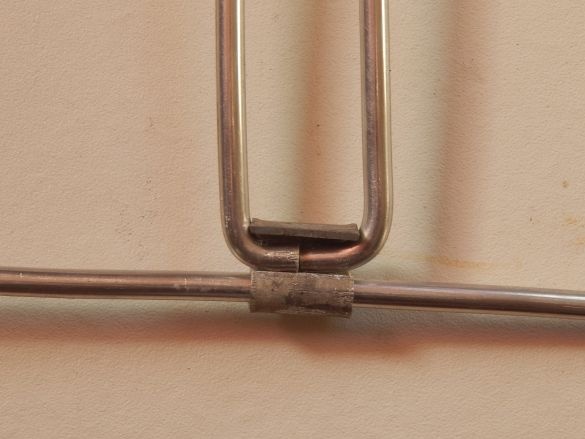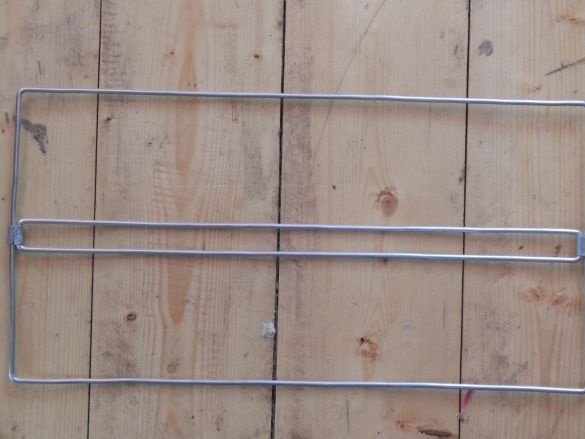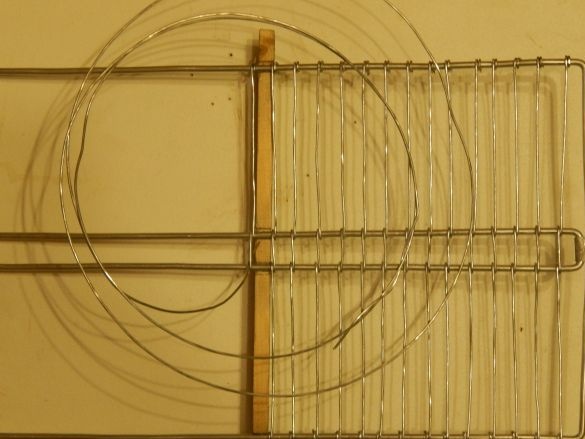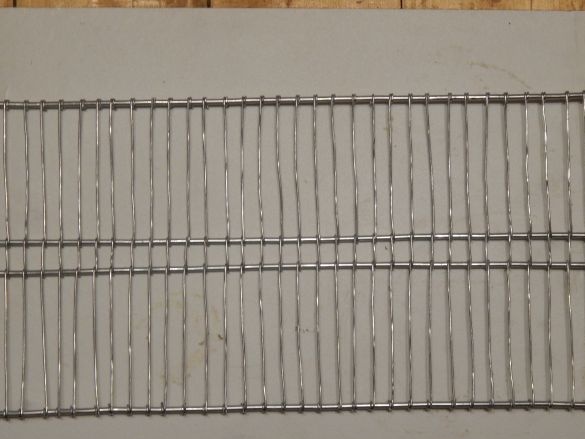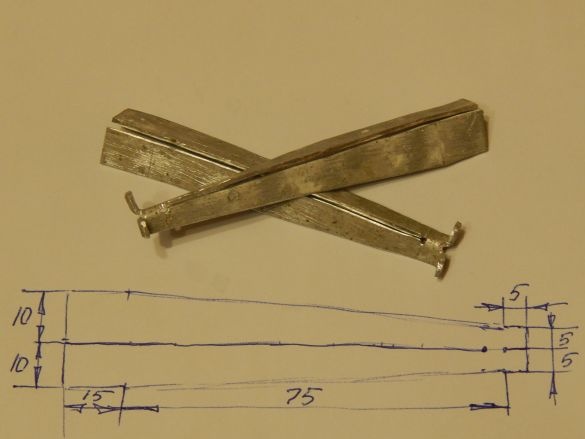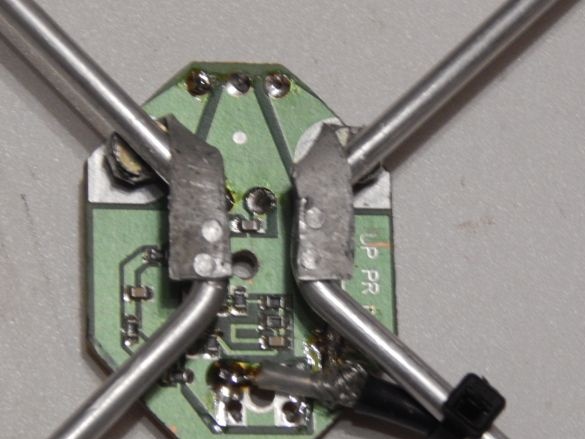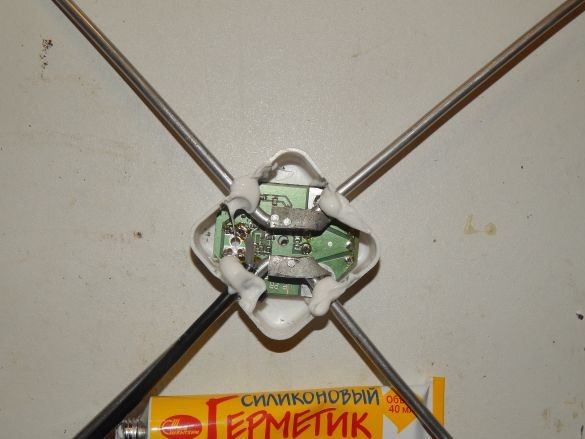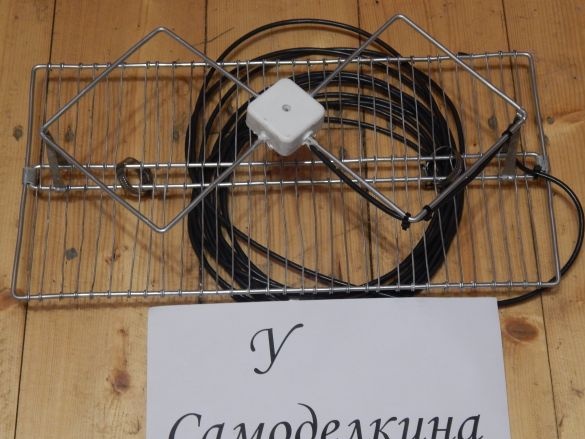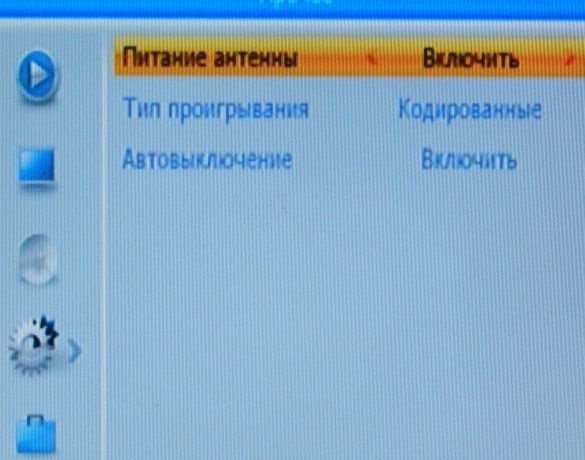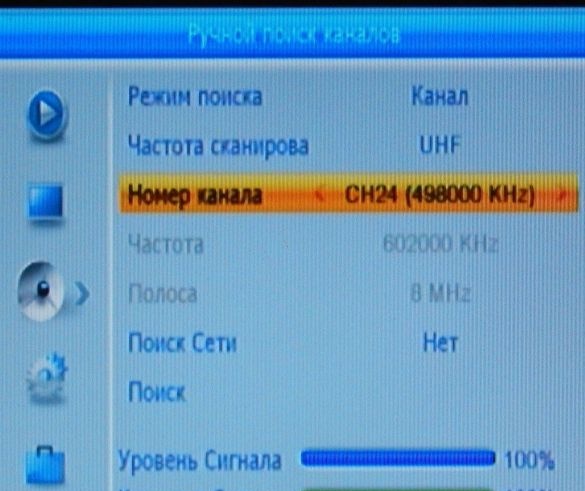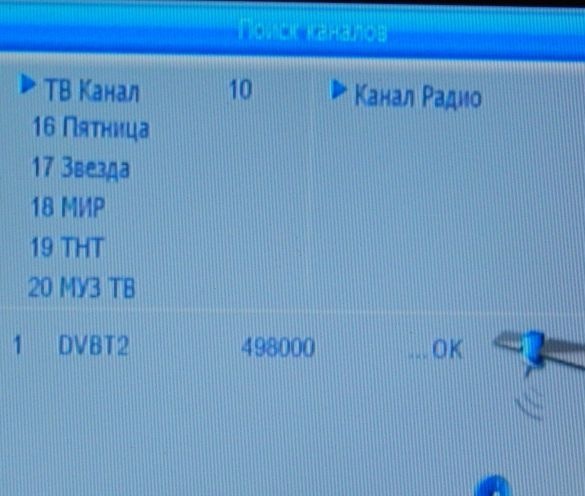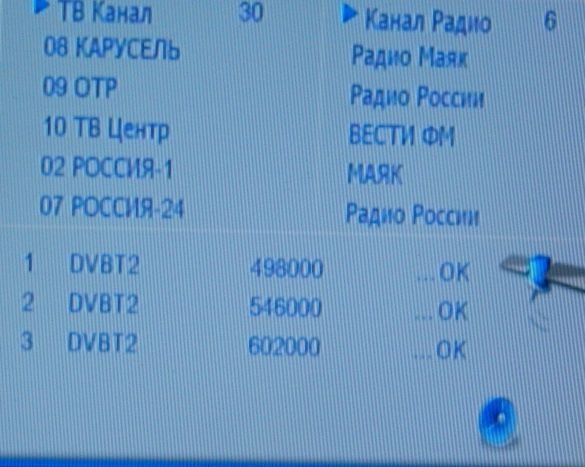I welcome all those who are not indifferent to the technical, and not only, needlework.
I want to bring to your attention a variant of the antenna for the distant reception of digital broadcasting. Of course, there is nothing fundamentally new in my product, but maybe the idea of combining an amplifier with an antenna is useful to someone. Antenna Kharchenko attracts primarily for its easy to manufacture, good repeatability, sufficient broadband, decent gain (stated up to 9dB with a reflector, but I still have nothing to measure) with small dimensions. In my opinion, it works better than the familiar “dryer”.
So, about the reasons that prompted the desire to create this work. In our city, of course, there is a tower with which the first multiplex of “numbers” is broadcasting and promise to include the second (for two years now), but I want to here and now, like many. In the neighboring city, the second package has long been included, but of course it is not accepted on the indoor antenna, and on the external one without an amplifier, too. I had such an antenna in the garden, recently I gave it to a neighbor in exchange for material, so there was an opportunity to show how I do it.
The production does not require highly deficient materials, even if everything comes out cheaper than the factory one, not to mention super-advertised with the promise of receiving 80 (?) Channels (there are some, I read about this scam).
Materials:
1. The length of the cable 4x16mm² - 1.5m.
2. The piece of wire SIP - 1.5-2m.
3. Sheet aluminum 1-1.5mm thick. 60x200mm. (I cut from an old pan)
4. Antenna amplifier from the "dryer".
5. Clamps for attaching the antenna to the mast.
6. Silicone sealant
7. And of course the cable and plug.
8. A small soldering box.
9. M5 screws (countersunk head) with nuts and washers - 2pcs.
Instruments:
1. Hacksaw
2. Scissors for metal
3. Drill (I used manual)
4. Drills 1.5 and 5mm.
5. File personal or flat file.
First of all, we are counting our antenna. Not particularly bothering, I took the data on the frequencies of interest to me from. In my city it is 602 MHz (37 channel) the first packet and 770 MHz (58 channel) the promised second. I’m interested in the data of the neighbors -546 MHz (30 channel) first and 498 MHz (24 channel) second multiplexes, so I’ll make an antenna on them. The obtained frequencies, or rather the average frequency, were substituted into the online calculator from and received the required sizes.
At the next stage, we prepare the material - strip the cable
and SIP for bare wire.
We extract a piece of sheet aluminum from an old pan.
From the cable core 16mm² (ø5.1mm) we use the pliers to bend the “eight” antennas.
We make the overlap of the G8 junction, grinding off half the diameter with a file.
Connection points are drilled ø1.5mm for rivets.
We rivet to the junction of the cable strips of aluminum with a width of 7 mm, a length of 50 (with a margin).
We bend the strips in such a way that the amplifier can be docked to them with screws.
In the strips we drill holes ø5mm for the screws that secure the amplifier, roughly speaking in place, using the amplifier itself as a template, maintaining a distance of 10mm (or whatever is calculated) between the plates. Countersink holes to a diameter of 7mm (diameter of countersunk screw head).
The next step I would call a mockery of the amplifier.
The amplifier in this design is not a luxury, but a means to push a weak signal through the cable, in which it would attenuate on the first meter, to the receiver.
Since he didn’t fit into the junction box in terms of dimensions, and it was necessary to insert it, his edges and the standard cable fastening were simply barbaric — metal scissors — cut to the desired size, and a hole for a self-tapping screw was drilled in the center of the board. The vital organs of the amplifier were not affected during this execution.
The antenna reflector is also made according to online calculations. The frames are bent from the same cable core as the antenna. The large frame is curved in the design dimensions of the reflector, and the small one is designed to attach the antenna to the mast, brackets (metal insulators) of the antenna sheet and, incidentally, to increase the rigidity of the grating.
The frames are interconnected by a strip of aluminum, followed by crimping with pliers.
We get the following construction:
The lattice is made of single SIP wires, alternately wrapping around the long sides of the frames in 10 mm increments.
In order to maintain the lattice pitch and size (to tighten the sides of the reflector in the hourglass) I recommend making a template from a 10mm rail by sawing in it cutouts for frames in size. By some miracle, I kept the old template (served as a lining for the chest of drawers for two years), so I don’t show how to make it, and so it’s clear.
As a result, the reflector looks like this:
Reminiscent of a fridge grill.
In general, of course, you can do without a reflector, but in my case it was necessary not only to increase the signal of the distant station, but to weaken the signal of the near one, although an extra gain (in my opinion an incorrect expression for the antenna, the directional coefficient is more correct) would not hurt.
The antenna and reflector connection is made of aluminum brackets (“metal insulators”).
All one-piece connections are made on rivets made of a single SIP core.
The drop cable, in the absence (all the excess has already been cut off and sealed off) of the standard mount, is simply soldered to the amplifier board.
Next, we hide the amplifier in a junction box and, due to severe weather conditions, we coat all joints and holes with silicone sealant.
We rivet the antenna sheet through the brackets to the reflector, and we get the finished product:
It does not make sense to show the installation and azimuth adjustment, I will show the result of my body movements in the receiver settings menu:
First of all, you need to turn on the antenna power, since the receiver has such a function.
In the settings menu we go into the manual search for channels, set the channel we need and on the lower scale (signal quality) we set the antenna in azimuth. Let me remind you that I need the 24th and 30th channels.
Well, God himself ordered to check the signal of our tower:
Now we turn on auto-search on the receiver, and see what programs it will catch us:
At first he caught me the second multiplex of the far tower, this is exactly what everything was up to.
The following two packages are almost identical, they differ only in news programs in different areas.
As a result, we have 30 channels, 10 of which are repeated.
Yes, I forgot to indicate the distances to the transmitters.If you believe the information from the interactive map TsETV, then to the farthest in a straight line 21 km., And to ours only 4 km. The elevation angle between them is 74 °.
In the manufacture of the antenna, no amplifier was seriously injured.


